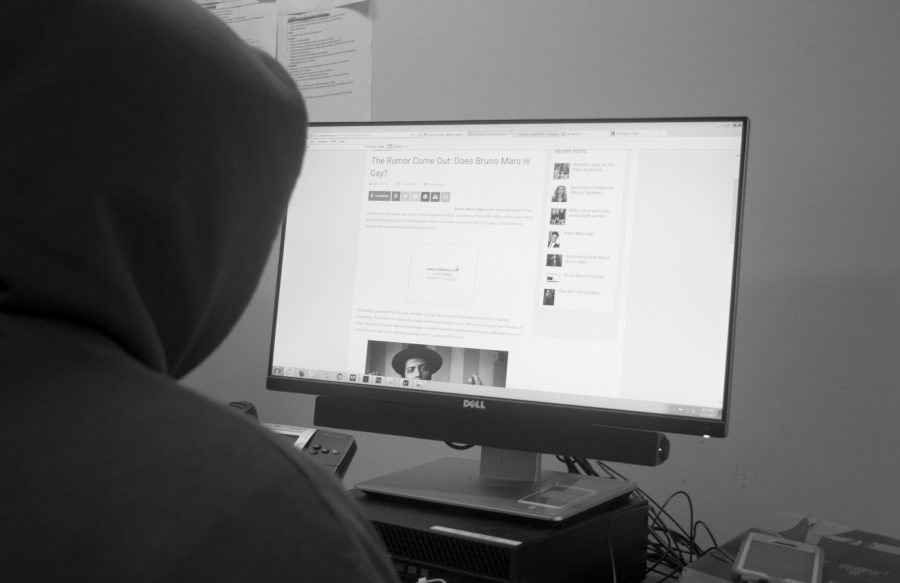Believe half of what you see and none of what you hear
Chris Christenson/The Skyline View
People often find alternative facts from websites that look trustworthy.
People do a great job sharing their opinion, but during a time where misinformation is on the rise, one of the most important things people should have in mind is to become more media literate by educating themselves.
The biggest issue that people have is someone sharing inaccurate facts. For many of us, we have become a lot more aware of not believing everything we hear since the recent election.
We’ve been hearing more backlash from someone who occupies one of the most highest positions in politics. But the issue isn’t your opinion, it’s where you’re getting your facts from.
Everyone is respectfully entitled to their opinion, no matter how far-fetched it may be. The important thing is to allow your opinion to be up for debate when you express it. People seem to forget that. Of course, you have the right to speak your mind but there is a point when you need to realize that not everything you say is fact and may come off as offensive. Although we’ve been given the this great right to speak freely, we need to consider its true potential.
Media literacy plays a significant role in your opinion. Heck, it depends on you how media literate or illiterate you are. When was the last time you’ve gone on with your day without being exposed to any sort of media? We can conclude that not many of us have, especially this day and age.
On the USC Marshall School of Business’s website, writer James E. Short said, “By 2015, it is estimated that Americans will consume both traditional and digital media for over 1.7 trillion hours, an average of approximately 15.5 hours per person per day.”
The importance to becoming media literate goes further than changing your opinion; it shapes your perspective of the world. People may not have a clue what media illiteracy is, but the best way to sum it up is reading without facts. It may be counter-intuitive, but not many people can tell that they’re doing this.
Pew Research Center conducted a survey trying to find out how many people came across this phenomena. What they found out was that nearly one fourth, or 23 percent of Americans knowingly or unknowingly shared fake news.
This huge chunk of people is not just statistics, they are people who exposed to or circulating alternative facts.
In order for you to become more media literate, you must first be able to tell what’s fact from fiction. Not only are you allowing to be exposed to information, you’re also trying to sift through information which aren’t just blurbs. This isn’t just information you find online or written in some random book. Facts are often reusable, unless they’re proven otherwise.
Lastly, being able to tell the difference from a credible source does not give you the upper hand to understanding facts. Facts can be interpreted differently by different people but facts still stay as facts.
Of course, there are times when experts may not know all the facts but supportive evidence tends to hold everything together. A popular example was when Charles Darwin’s theory of the origin of species went against the general consensus of his time. Many people didn’t believe his opinion but he was able to prove it by finding supportive evidence.
During Darwin’s time, people had conflicting beliefs influenced by the Enlightenment period. Instead of Darwin catering to natural theology, he was drawn to exploring the world through biology and understanding how it functions.







